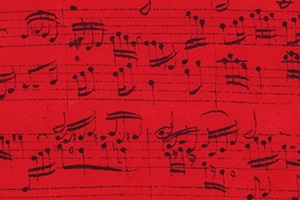SONGWRITER
Smackwater Jack: the classic tale of outlaws and lawmen and the blues harmony behind it

Carole King LP cover
Smackwater Jack is a 1971 song released by Carole King, the most successful female songwriter of the 20th century who has written or co-written over a hundred pop hits featured on the Billboard Hot 100. The track was recorded for her breakthrough album Tapestry that topped the U.S. album chart for 15 weeks and stayed there for over six years.
The song was composed by Carole King in collaboration with her ex-husband Gerry Goffin, a prolific lyricist who co-wrote many international pop hits of the 1960s.
The lyrics of Smackwater Jack spins a story of a very Western-like confrontation between the outlaw Smackwater Jack and Big Jim the Chief. This theme separates the song from the rest of the tracks on Tapestry that feature more personal and emotionally expressive lyrics.
Listen to Smackwater Jack by Carole King:
Compositionally, Smackwater Jack fully complies with the tonal theory and takes the shape of an advanced musical form, showing separate chord progressions for different song sections. In the harmonic analysis of the verses chord chains, the scale degrees (denoted with Roman numerals) show the following progression in the key of D major:
- D–G–D–G–D or I–IV–I–IV–I;
- G–A–G–D or IV–V–IV–I.
The first half of the verse is accompanied by the D–G–D simple two-chord riff which also appears in the intro and outro. In musical theory, the IV–I musical turnaround formed by chords rooted in the fourth and first scale degrees is referred to as the plagal cadence. The rest of the verse plays out with the progression juxtaposing the G subdominant and the A dominant chords. The tension created by this alternation is then resolved by the D tonic chord at the end of the last phrase.
Note that the verse is composed using three primary major chords of the Ionian mode—a technique that comes from the blues genre where most of the songs follow this simple formula. Here are some examples of other songs written this way:
- Terraplane Blues
- Statesboro Blues
- Ramblin' on My Mind
- Bony Moronie
- Whole Lotta Shakin' Goin' On
- Tumbling Dice
In the choruses, the progression attains a slight but palpable variety introduced by the Bm minor triad rooted in the sixth scale degree which is often referred to as the submediant chord: A–Bm–A–D–G or V–vi–V–I–IV.
In the instrumental solo, we see the appearance of the Em7 supertonic seventh chord rooted in the second degree of the Ionian scale. In this case, it's a part of the strong ii7–V7–I–IV–I cadence used in classical music to close music sections:
- D–G–D–G–D or I–IV–I–IV–I;
- A7–Em7–A7–D–G–D or V7–ii7–V7–I–IV–I.
Discover more songs composed in Ionian major mode and check out their harmonic analysis in the following articles:
- 6 songs to unpack Ionian mode and the major scale
- 9 Beatles songs that combine harmonic major with Ionian mode
- Longfellow Serenade and the fireside poet that kindled Neil Diamond's song
- Wildwood Weed: the cheeky ganja farmers song that got banned
- Sugaree: Jerry Garcia's song referencing his lyricist's criminal past
- D'yer Mak'er: meaning of Led Zeppelin's most controversial song
- Seven Seas of Rhye: song of imaginary land brought to life by Ionian and Mixolydian modes
- Coal Miner's Daughter was forced to remove a third of the lyrics from her autobiographical song
- I Wanna Be Sedated: pure classical harmony cementing the Ramones' hit in punk rock history
- Hasta Mañana: the origins of the best ABBA ballad



